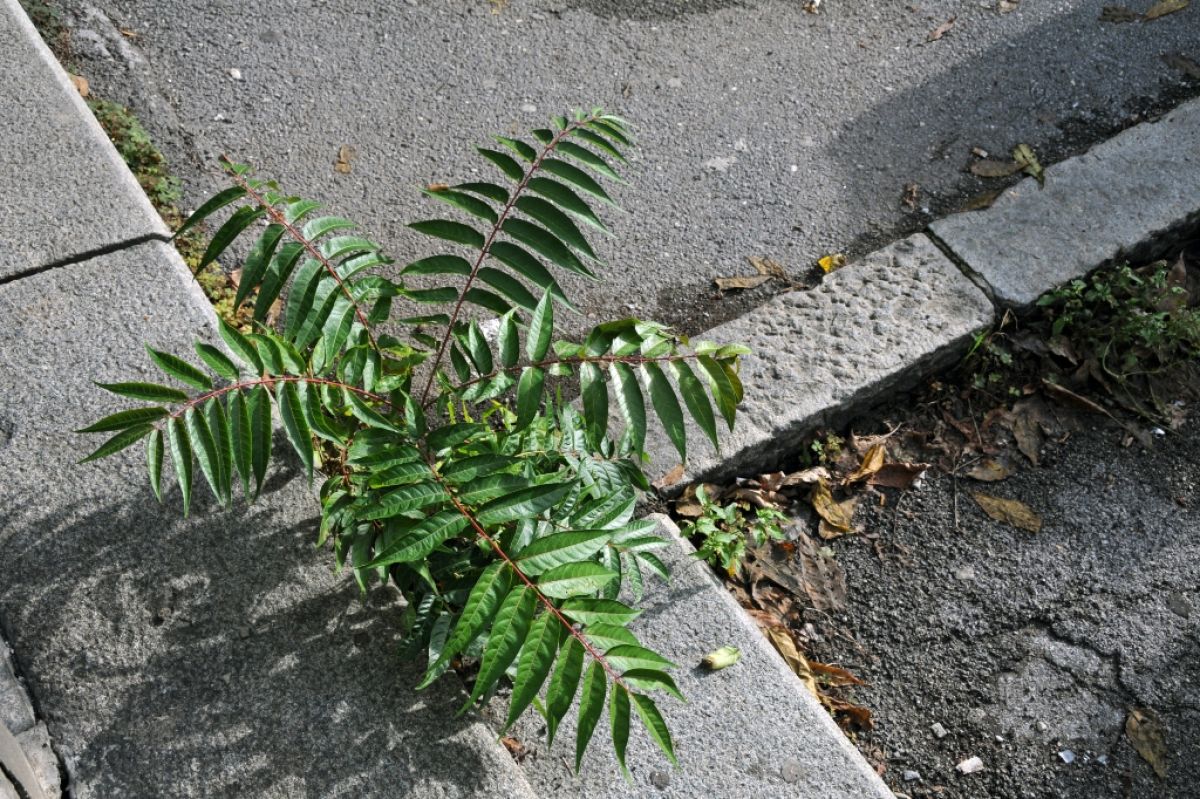Focus on Flowers
Betty Smith is the author of the book A Tree Grows in Brooklyn about a young girl who is inspired by a tree. Unfortunately, the tree happens to be an invasive species. It is native to China and seeds were brought into North America in the 1700s.
The botanical name is Ailanthus altissima, and the common name is tree of heaven. Its seeds fly in the wind and germinate wherever they fall and become pernicious weeds. It has the fastest growth of any tree and often germinates and grows in multiples with connected root systems that are hard to eradicate without the use of poisonous herbicides. This tree is also allelopathic, which means it prevents other plants from growing near it.
It produces pollen causing allergic reactions, and its leaves, branches, seeds, and bark all can cause skin irritation in animals and people. It is also the main host for the spotted lanternfly which is a pest from Asia.
A tree of heaven can grow up to 60-70 feet tall and 80 feet wide and can seed all over a neighborhood, and you certainly do not want one in your yard. It is deciduous and so loses its leaves in winter and produces non-descript flowers with strong odor. It also crowds out native species that nourish our native wildlife.
Be sure to pull out any seedlings before they develop their deep taproots and plant our native sumac instead.
This is Moya Andrews, and today we focused on A Tree Grows in Brooklyn.










